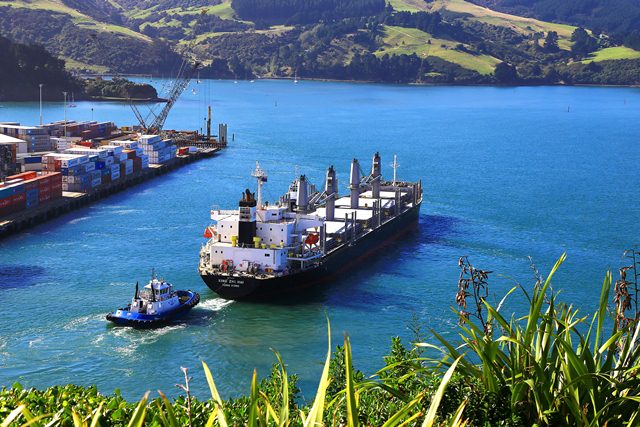 The Baltic and International Maritime Council (BIMCO) has revised its outlook for container shipping demand in 2020 from low global demand growth to negative demand growth for the full year.
The Baltic and International Maritime Council (BIMCO) has revised its outlook for container shipping demand in 2020 from low global demand growth to negative demand growth for the full year.
According to BIMCO’s revised forecast released March 18, container shipping freight rates are now expected to go down to loss-making levels as the coronavirus pandemic continues its negative impact on the economy and shipping.
This compares to the council’s earlier forecast that average freight rates for 2020 would already slide below last year’s level.
BIMCO now expects loss-making rates “due to deteriorating demand-supply fundamentals and higher fuel cost arising from the IMO 2020 sulphur cap implementation.”
This forecast, it added, is despite the positive effect of the fall in oil prices.
Moreover, BIMCO observed that the “Phase One” agreement of the US-China trade war is not delivering on its promise to boost volumes of the implicated goods last January.
“This opening is likely to set the tone for the full year. The failure itself is no surprise, but the magnitude of it surely is,” it said.
Additionally, global economic activity, which slowed down significantly in 2019, will become even lower in 2020. Some nations may even fall into recession, it added.
The outlook further stated that in the short term, China’s manufacturing sector will still be recovering from the lockdown. “Reported productivity sits around 60-75% of capacity, whereas the—equally supply-chain-critical—truck drivers supposedly are fully recovered.”
In the medium term, demand will start to pick up as Chinese manufacturing resumes normal operations. Chinese exports of backlogged orders will resume and lift volumes out of Asia. The idle fleet will decline as the number of cancelled sailings is reduced.
But for the longer term, the lockdown of Europe and North America is seen to keep consumers at home, dampening container demand during this period.
BIMCO said it “does not expect a demand boost to appear when daily lives return. We will merely see a gradual recovery to normal freight volumes.”
For the regular network logistics, BIMCO expects 2020 to be “massively disrupted due to these out-of-sync impacts to export centres and import centres across the globe.”
On spot freight rates, the report said these are currently artificially elevated on the front hauls out of Asia due to the positive effect of the reduced capacity such as blank sailings.
Looking ahead, BIMCO said: “Slowing globalisation may be even more pronounced than what we have seen in terms of slowdown since the financial crisis of 2008. Increasing protectionist measures may also become more widespread as nations seek to fix exposed vulnerability which the health crisis has made abundantly clear. Global and regional supply chains will be up for a review and while some will alter, some of the changes will benefit shipping demand while others won’t.”
The report said the trade-to-GDP multiplier could hint at the direction of shipping demand: Coming down from an average multiplier of 1 (2002-2008) to an average of 0.85 (2011-2020F), BIMCO expects the multiplier to stay below 1.
Photo by Nareeta Martin on Unsplash





